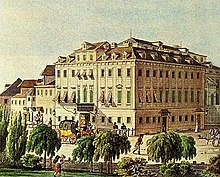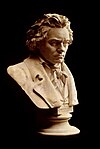
Ludwig van Beethoven was a German composer and pianist. He is one of the most revered figures in the history of Western music; his works rank among the most performed of the classical music repertoire and span the transition from the Classical period to the Romantic era in classical music. Beethoven's career has conventionally been divided into early, middle, and late periods. His early period, during which he forged his craft, is typically considered to have lasted until 1802. From 1802 to around 1812, his middle period showed an individual development from the styles of Joseph Haydn and Wolfgang Amadeus Mozart, and is sometimes characterized as heroic. During this time, he began to grow increasingly deaf. In his late period, from 1812 to 1827, he extended his innovations in musical form and expression.

Franz Peter Schubert was an Austrian composer of the late Classical and early Romantic eras. Despite his short life, Schubert left behind a vast oeuvre, including more than 600 secular vocal works, seven complete symphonies, sacred music, operas, incidental music, and a large body of piano and chamber music. His major works include the art songs "Erlkönig", "Gretchen am Spinnrade", "Ave Maria"; the Trout Quintet, the unfinished Symphony No. 8 in B minor, the "Great" Symphony No. 9 in C major, the String Quartet No. 14 Death and the Maiden, a String Quintet, the two sets of Impromptus for solo piano, the three last piano sonatas, the Fantasia in F minor for piano four hands, the opera Fierrabras, the incidental music to the play Rosamunde, and the song cycles Die schöne Müllerin, Winterreise and Schwanengesang.
This is a list of music-related events in 1808.

Symphony No. 40 in G minor, K. 550 was written by Wolfgang Amadeus Mozart in 1788. It is sometimes referred to as the "Great G minor symphony", to distinguish it from the "Little G minor symphony", No. 25. The two are the only extant minor key symphonies Mozart wrote.

The Symphony No. 6 in F major, Op. 68, also known as the Pastoral Symphony, is a symphony composed by Ludwig van Beethoven and completed in 1808. One of Beethoven's few works containing explicitly programmatic content, the symphony was first performed alongside his fifth symphony in the Theater an der Wien on 22 December 1808 in a four-hour concert.

Ferdinand Ries was a German composer. Ries was a friend, pupil and secretary of Ludwig van Beethoven. He composed eight symphonies, a violin concerto, nine piano concertos, three operas, and numerous other works, including 26 string quartets. In 1838 he published a collection of reminiscences of his teacher Beethoven, co-written with Beethoven's friend, Franz Wegeler. Ries' symphonies, some chamber works—most of them with piano—his violin concerto and his piano concertos have been recorded, exhibiting a style which, given his connection to Beethoven, lies between the Classical and early Romantic styles.

Ludwig van Beethoven's Piano Concerto No. 4 in G major, Op. 58, was composed in 1805–1806. Beethoven was the soloist in the public premiere as part of the concert on 22 December 1808 at Vienna's Theater an der Wien.
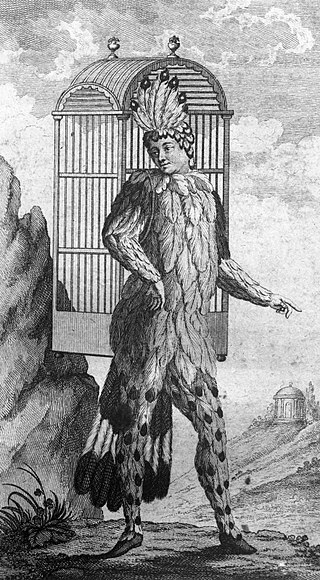
Emanuel Schikaneder was a German impresario, dramatist, actor, singer, and composer. He wrote the libretto of Wolfgang Amadeus Mozart's opera The Magic Flute and was the builder of the Theater an der Wien. Peter Branscombe called him "one of the most talented theatre men of his era". Aside from Mozart, he worked with Salieri, Haydn and Beethoven.

Ludwig van Beethoven composed the Mass in C major, Op. 86, to a commission from Prince Nikolaus Esterházy II in 1807. The mass, scored for four vocal soloists, choir and orchestra, was premiered that year by the Prince's musical forces in Eisenstadt. Beethoven performed parts of it in his 1808 concert featuring the premieres of four major works including his Fifth Symphony. The mass was published in 1812 by Breitkopf & Härtel.
The Vienna Symphony is an Austrian orchestra based in Vienna. Its primary concert venue is the Vienna Konzerthaus. In Vienna, the orchestra also performs at the Musikverein and at the Theater an der Wien.

The Fantasy for piano, vocal soloists, mixed chorus, and orchestra, Op. 80, usually called the Choral Fantasy, was composed in 1808 by then 38-year-old Ludwig van Beethoven.

Marianna Martines, also Marianne von Martinez, was a composer, pianist, and singer of the classical period, based in Vienna, Austria who knew Mozart and Haydn.

The Vienna Singverein is the concert choir of the Vienna Musikverein with around 230 members. It is regularly requested by top orchestras and conductors for large and varied projects.
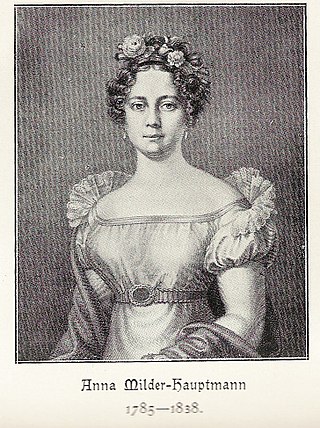
Pauline Anna Milder-Hauptmann was an operatic soprano.

Il ritorno di Tobia is an oratorio in two parts composed in 1775 by Joseph Haydn. The work is the first oratorio the composer wrote and, according to Jones, was "his most extended and ambitious composition up to that time".

The Tonkünstler-Societät was a benevolent society for musicians in Vienna, which lasted from the mid-18th century to the mid-20th. Its purpose was "to support retired musicians and their families". Beginning in 1772, the Society mounted a series of benefit concerts, often with large forces of performers, at which were performed works by leading Classical-period composers, including Joseph Haydn, Wolfgang Amadeus Mozart, and Ludwig van Beethoven.

Hugo Gottesmann was an Austrian violinist, violist, conductor, and chamber musician. A highly decorated soldier in World War I, his career in Vienna as a conductor and violinist was truncated with the advent of the Third Reich in 1933. He was fired from his positions at Radio Wien, the Vienna Symphony, and the Academie für Musik and forced to seek work elsewhere in Europe and emigrate to the United States.
The Wiener Tonkünstler-Orchester was an orchestra association in Vienna, which existed until 1933.

Robert Freund is an Austrian horn player.
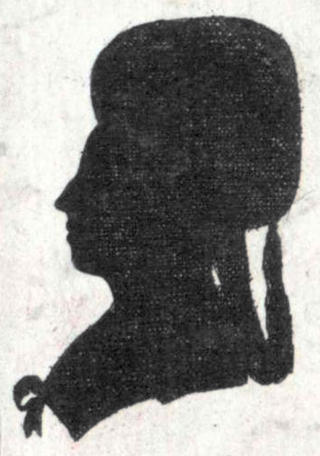
Therese Barbara Alberta Teyber was an Austrian operatic soprano.

